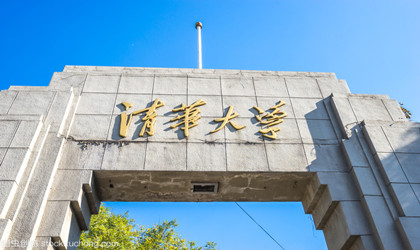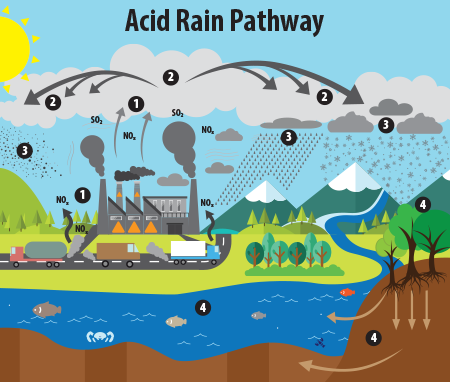 Home - TDLAS modules - Applications - HealthyPhoton and Tsinghua Collaboration for On-line SO3 Analysis
Home - TDLAS modules - Applications - HealthyPhoton and Tsinghua Collaboration for On-line SO3 Analysis
HealthyPhoton and Tsinghua Collaboration for On-line SO3 Analysis
Abstract
In recent days, HealthyPhoton signed an agreement with the Institute of Control, Safety, and Simulation of Large Power Plants of Tsinghua University to develop the on-line analysis instrument for sulfur trioxide (SO3) jointly. The institute is one of the five major research institutes under the Department of Thermal Engineering at the Tsinghua University.

Since the mid-1970s, the Institute of Control, Safety, and Simulation of Large Power Plants of Tsinghua University has carried out a lot of research work in the direction of thermal energy and power system modeling and simulation. It pioneered China’s energy simulation discipline and was the first to carry out technical research on simulation systems for large-scale thermal power plants in China. After two decades of hard work, the institute has led the academic research and technological development of China’s energy industry, making China one of the international leaders in the field of thermal power generation.
Emission of SO3 & Acid rain formation
Coal combustion would release SO3. When SO3 is discharged into the atmosphere, reactants with alkaline components will form sulfate particles. Moreover, the SO3 will also combine with the water vapor in the air and form acid rain. In recent years, China has put lots of effort into controlling pollution. Technological transformation is expected for coal-fired power plants for the new ultra-low emission standard, which standards of 50, 35, and 10 mg·m-3 for sulfur dioxide (SO2), nitrogen oxides (NOx), and particulate matter. The overall quality of the environment has been improving year by year. However, the problem of PM2.5 and acid rain still needs our attention. The data shows that 239 out of 338 cities’ air quality was disqualified in 2017, which accounts for 70.7%.

Among the 463 cities (districts and counties) where precipitation was monitored, the average frequency of acid rain was 10.8%, and the proportion of cities with acid rain was 36.1%. The main anion in precipitation is sulfate, which accounts for 21.1% of the total ion equivalent. It shows the main type of acid rain is sulfuric acid. Besides, the ultra-low emission standard does not set emission limits for SO3 emission concentration, which will increase acid dew point and the risk of equipment corrosion. The high concentration of SO3 in the flue gas will result in smoke plume and increase opacity. The premise of effective control of SO3 in coal flue gas is to accurately monitor its component concentration on-line. However, due to the very active chemical properties of SO3, its monitoring technology still needs improvement.
Comparison of SO3 monitoring technologies
Traditional SO3 monitoring technology is an analytical chemical method based on offline sampling, and the measurement representativeness and real-time performance are not ideal. Also, because the spectra of water (H2O) and SO2 overlap with SO3, the non-dispersive infrared sensor (NDIR) technology cannot distinguish the three components separately. The quantum cascade laser absorption spectroscopy (QCLAS) technology of HealthyPhoton can better distinguish H2O, SO2, and SO3 due to its narrow spectral characteristics. The technology can provide a highly sensitive and highly selective solution for continuous on-line SO3 monitoring in denigration systems of coal-fired power plants.
HealthyPhoton products in this project:
1. HPHCH High-Temperature Herriott Multi-pass Absorption Cell
Features:
- Robust and reliable industrial-grade module
- Effective optical path-length up to 15 meters (others path-lengths can be customized)
- Use of material with low thermal expansion coefficient, which prevents beam walk-off caused by temperature change
- Anti-corrosion inert coatings on the inner surface that prevents molecular adsorption effect
- Steady heating from 50°C to 300°C
- Pre-aligned fiber input eliminating the need for complex beam coupling and re-alignment
- (Optional) gas pressure monitor/control
2. QC750-Touch™ Quantum Cascade Laser Driver
Features:
- All-in-one module includes both current driver and temperature controller
- Linear output to TEC greatly extends the Peltier device lifetime
- Output protection mechanisms ensure the safety of QCL chip
- Touchscreen UI is convenient for user operation and status monitoring
- It is easy to set up and fully compatible with HealthyPhoton’s QCL emitter module (HPQCL-Q)
3. QC-Qube™ Quantum Cascade Laser Package
Features:
- Compact package (70×70×70mm3) specially designed for Quantum Cascade Lasers
- Integration of QCL, Peltier cooler, cooling fan, and output beam collimating lens
- Output optical power can reach up to 100 mW
- Compatible with QC750-TouchTM QCL driver
- Cables and connectors included
Conclusion:
In conclusion, the Department of Thermal Engineering at the Tsinghua University chose HealthyPhoton products based on the advantages such as convenient assembly, out-of-the-box use, simple operation, and reliable quality. We are looking forward to carrying out long-term and stable cooperation for the development of follow-up instrument projects.
 Tel:+86-400 961 6990 Email:info@healthyphoton.com
Add:Room 305, Building 1, Zhongchuang Science Park, Jinyuan Road, Panhuo Street, Yinzhou District, Ningbo City,China
Tel:+86-400 961 6990 Email:info@healthyphoton.com
Add:Room 305, Building 1, Zhongchuang Science Park, Jinyuan Road, Panhuo Street, Yinzhou District, Ningbo City,China


